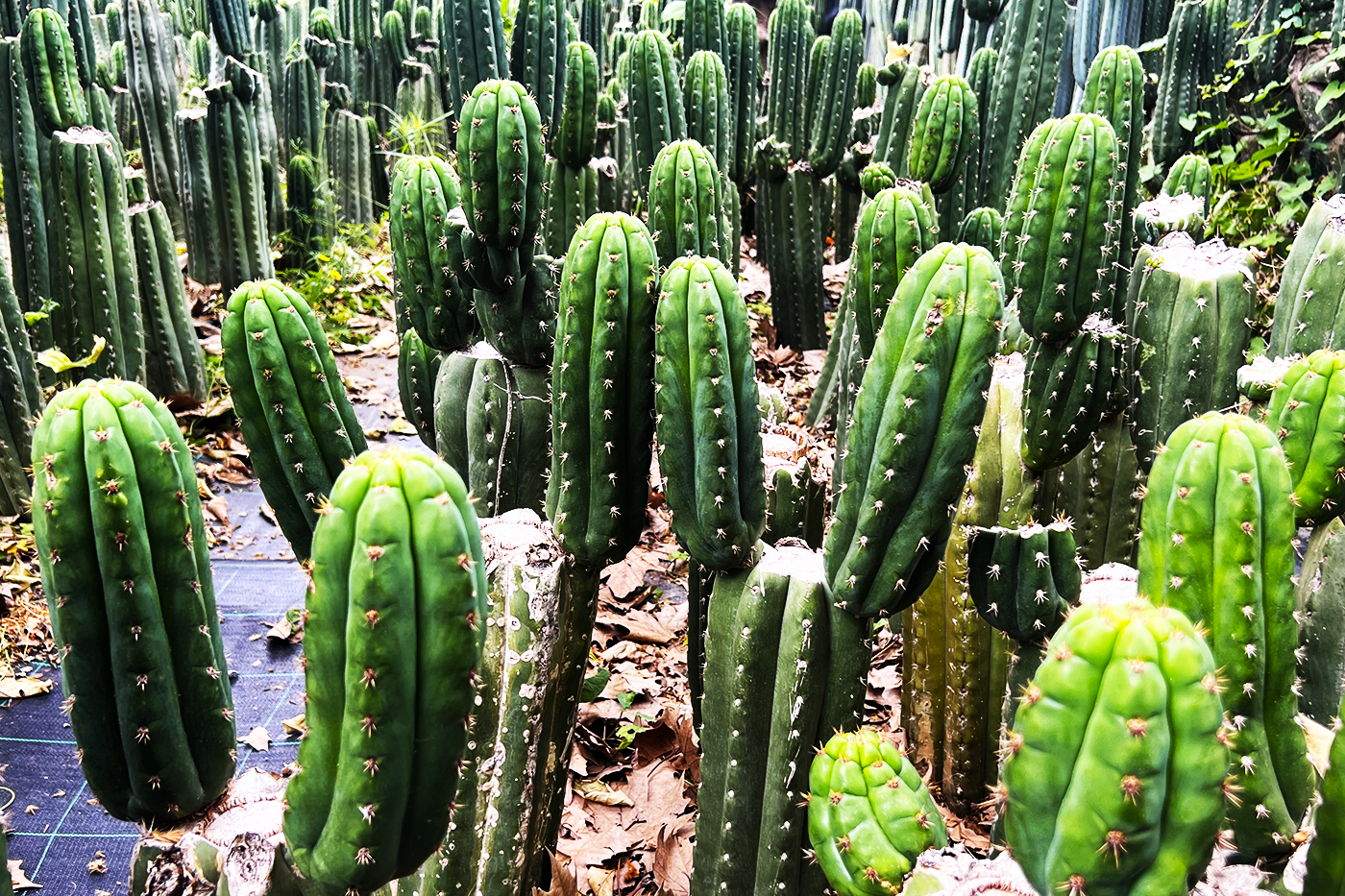Trichocereus is a genus of cacti native to South America, widely appreciated for its striking beauty and medicinal properties. Commonly known as San Pedro cacti, these plants are popular among collectors and ornamental gardeners alike. One of the most effective methods for propagating Trichocereus is through cuttings.
In this article, we'll explore how to create perfect Trichocereus cuttings and the best practices for successful propagation.
What Is Trichocereus?
The Trichocereus genus includes several species of columnar cacti known for their height, unique forms, and spectacular flowers. One of the most iconic is Trichocereus macrogonus var. pachanoi, which has been used in traditional Andean ceremonies for over 3,000 years. This cactus can grow up to 12 meters tall and produces large, fragrant white flowers that bloom at night.
Key Features of Trichocereus
-
Size: From a few meters up to over 12 meters tall
-
Spines: Yellow or brown spines growing from areoles
-
Flowers: Large, white, and highly fragrant; bloom at night
-
Fruits: Oval-shaped, with white flesh and small seeds
How to Prepare Trichocereus Cuttings
✅ Step 1: Select a Healthy Mother Plant
Choosing a healthy and mature plant is essential. Make sure your Trichocereus is robust and free from pests or diseases. A well-established plant has more energy reserves, which improves the chances of successful rooting.
✅ Step 2: Cut the Segment
-
Use clean tools: Always use a sharp, disinfected knife or pruning shears to prevent infections.
-
Make a clean cut: Select a stem segment 15–20 cm (6–8 inches) long. Cut just above a node or rib intersection.
-
Let it dry: Allow the cutting to dry for 1–2 days in a cool, ventilated place. This helps the wound callous over, preventing rot after planting.
Preparing the Right Substrate
Trichocereus cuttings require a well-draining soil mix. A suitable mix includes:
-
Potting soil
-
Coarse sand
-
Perlite or pumice
This ensures proper drainage and helps avoid overwatering, which is a common issue with cacti.
Rooting the Trichocereus Cutting
✅ Step 3: Plant the Cutting
-
Make a hole in the soil and insert the cutting so that part of the stem is buried.
-
Keep it upright: Ensure the cutting stands straight and stable.
✅ Step 4: Post-Planting Care
-
Delay watering: Wait at least one week before watering to encourage healthy root formation and avoid rot.
-
Indirect light: Place the cutting in a spot with indirect sunlight. Direct exposure at this stage may scorch the plant.
-
Monitor humidity: Use a spray bottle if needed to maintain moderate humidity without over-saturating the substrate.
Long-Term Care for Trichocereus Cuttings
Once your cutting starts to show signs of growth, transition to regular cactus care:
-
Light: Gradually introduce it to direct sunlight. Trichocereus cacti thrive in bright, sunny environments.
-
Watering: Water moderately, allowing the soil to dry completely between waterings.
-
Fertilizing: During the growing season (spring and summer), use a diluted cactus fertilizer once a month to support strong growth.
🌵 Conclusion
Propagating Trichocereus from cuttings is a highly rewarding process. With the right techniques and consistent care, you can grow a healthy new cactus that not only enhances your garden or collection, but also connects you with the rich cultural heritage of the Andes.
By following these steps and maintaining a suitable environment, your cuttings will thrive and eventually reward you with stunning growth and blooms. Good luck with your gardening journey!




